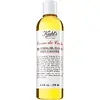What's inside
What's inside
 Key Ingredients
Key Ingredients

 Benefits
Benefits

 Concerns
Concerns

 Ingredients Side-by-side
Ingredients Side-by-side

Water
Skin ConditioningSodium Lauroyl Methyl Isethionate
CleansingCocamidopropyl Betaine
CleansingSodium C14-16 Olefin Sulfonate
CleansingGlycerin
HumectantSalix Alba Bark Extract
AstringentSodium Chloride
MaskingGluconolactone
Skin ConditioningSodium Benzoate
MaskingTrisodium Ethylenediamine Disuccinate
Cocamidopropyl Dimethylamine
EmulsifyingCitric Acid
BufferingSodium Lactate
BufferingSodium Hydroxide
BufferingSodium PCA
HumectantLimonene
PerfumingLinalool
PerfumingMelia Azadirachta Leaf Extract
Skin ConditioningGlycolic Acid
BufferingLactic Acid
BufferingMalic Acid
BufferingCalcium Gluconate
HumectantMelia Azadirachta Flower Extract
Skin ConditioningButyrospermum Parkii Butter
Skin ConditioningCitronellol
PerfumingCocos Nucifera Water
MaskingPyruvic Acid
MaskingTartaric Acid
BufferingCentella Asiatica Leaf Extract
Skin ConditioningGeraniol
PerfumingHydrolyzed Oat Protein
Skin ConditioningCamellia Oleifera Leaf Extract
AstringentPhospholipids
Skin ConditioningSodium Carbonate
BufferingLeuconostoc/Radish Root Ferment Filtrate
AntimicrobialCocos Nucifera Fruit Juice
EmollientTocopheryl Acetate
AntioxidantBenzyl Alcohol
PerfumingAscorbyl Palmitate
AntioxidantCholecalciferol
Pantothenic Acid
Skin ConditioningRetinyl Palmitate
Skin ConditioningPotassium Sorbate
PreservativeParfum
MaskingWater, Sodium Lauroyl Methyl Isethionate, Cocamidopropyl Betaine, Sodium C14-16 Olefin Sulfonate, Glycerin, Salix Alba Bark Extract, Sodium Chloride, Gluconolactone, Sodium Benzoate, Trisodium Ethylenediamine Disuccinate, Cocamidopropyl Dimethylamine, Citric Acid, Sodium Lactate, Sodium Hydroxide, Sodium PCA, Limonene, Linalool, Melia Azadirachta Leaf Extract, Glycolic Acid, Lactic Acid, Malic Acid, Calcium Gluconate, Melia Azadirachta Flower Extract, Butyrospermum Parkii Butter, Citronellol, Cocos Nucifera Water, Pyruvic Acid, Tartaric Acid, Centella Asiatica Leaf Extract, Geraniol, Hydrolyzed Oat Protein, Camellia Oleifera Leaf Extract, Phospholipids, Sodium Carbonate, Leuconostoc/Radish Root Ferment Filtrate, Cocos Nucifera Fruit Juice, Tocopheryl Acetate, Benzyl Alcohol, Ascorbyl Palmitate, Cholecalciferol, Pantothenic Acid, Retinyl Palmitate, Potassium Sorbate, Parfum
Zea Mays Germ Oil
EmollientRicinus Communis Seed Oil
MaskingDiethylhexyl Sodium Sulfosuccinate
CleansingCocamide Mipa
EmulsifyingParfum
MaskingPropylene Glycol
HumectantPersea Gratissima Oil
Skin ConditioningVitis Vinifera Seed Oil
EmollientCocos Nucifera Oil
MaskingOryza Sativa Bran Oil
EmollientCoumarin
PerfumingTocopherol
AntioxidantBenzyl Alcohol
PerfumingHelianthus Annuus Seed Oil
EmollientRosmarinus Officinalis Extract
AntimicrobialZea Mays Germ Oil, Ricinus Communis Seed Oil, Diethylhexyl Sodium Sulfosuccinate, Cocamide Mipa, Parfum, Propylene Glycol, Persea Gratissima Oil, Vitis Vinifera Seed Oil, Cocos Nucifera Oil, Oryza Sativa Bran Oil, Coumarin, Tocopherol, Benzyl Alcohol, Helianthus Annuus Seed Oil, Rosmarinus Officinalis Extract
Ingredients Explained
These ingredients are found in both products.
Ingredients higher up in an ingredient list are typically present in a larger amount.
Benzyl Alcohol is most commonly used as a preservative. It also has a subtle, sweet smell. Small amounts of Benzyl Alcohol is not irritating and safe to use in skincare products. Most Benzyl Alcohol is derived from fruits such as apricots.
Benzyl Alcohol has both antibacterial and antioxidant properties. These properties help lengthen the shelf life of products. Benzyl Alcohol is a solvent and helps dissolve other ingredients. It can also improve the texture and spreadability.
Alcohol comes in many different forms. Different types of alcohol will have different effects on skin. This ingredient is an astringent alcohol.
Using high concentrations of these alcohols are drying on the skin. They may strip away your skin's natural oils and even damage your skin barrier. Astringent alcohols may also irritate skin.
Other types of astringent alcohols include:
According to the National Rosacea Society based in the US, you should be mindful of products with these alcohols in the top half of ingredients.
Any type of sanitizing product will have high amounts of alcohol to help kill bacteria and viruses.
Learn more about Benzyl AlcoholParfum is a catch-all term for an ingredient or more that is used to give a scent to products.
Also called "fragrance", this ingredient can be a blend of hundreds of chemicals or plant oils. This means every product with "fragrance" or "parfum" in the ingredients list is a different mixture.
For instance, Habanolide is a proprietary trade name for a specific aroma chemical. When used as a fragrance ingredient in cosmetics, most aroma chemicals fall under the broad labeling category of “FRAGRANCE” or “PARFUM” according to EU and US regulations.
The term 'parfum' or 'fragrance' is not regulated in many countries. In many cases, it is up to the brand to define this term.
For instance, many brands choose to label themselves as "fragrance-free" because they are not using synthetic fragrances. However, their products may still contain ingredients such as essential oils that are considered a fragrance by INCI standards.
One example is Calendula flower extract. Calendula is an essential oil that still imparts a scent or 'fragrance'.
Depending on the blend, the ingredients in the mixture can cause allergies and sensitivities on the skin. Some ingredients that are known EU allergens include linalool and citronellol.
Parfum can also be used to mask or cover an unpleasant scent.
The bottom line is: not all fragrances/parfum/ingredients are created equally. If you are worried about fragrances, we recommend taking a closer look at an ingredient. And of course, we always recommend speaking with a professional.
Learn more about Parfum